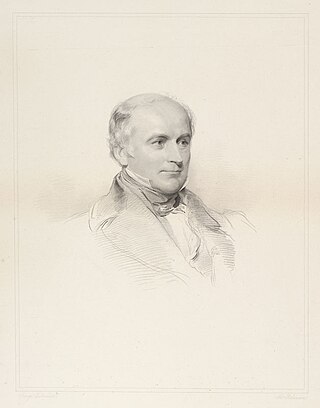Related Research Articles

A purpose trust is a type of trust which has no beneficiaries, but instead exists for advancing some non-charitable purpose of some kind. In most jurisdictions, such trusts are not enforceable outside of certain limited and anomalous exceptions, but some countries have enacted legislation specifically to promote the use of non-charitable purpose trusts. Trusts for charitable purposes are also technically purpose trusts, but they are usually referred to simply as charitable trusts. People referring to purpose trusts are usually taken to be referring to non-charitable purpose trusts.

McPhail v Doulton[1970] UKHL 1, also known as Re Baden's Deed Trusts is a leading English trusts law case by the House of Lords on the certainty of beneficiaries. It held that so long as any given claimant can clearly be determined to be a beneficiary, or not, a trust is valid. The Lords also remanded the case to the Court of Appeal to be decided on this new legal principle as Re Baden's Deed Trusts .
R v Hinks [2000] UKHL 53 is an English case heard by the House of Lords on appeal from the Court of Appeal of England and Wales. The case concerned the interpretation of the word "appropriates" in the Theft Act 1968. The relevant statute is as follows:

In the trust law of England, Australia, Canada and other common law jurisdictions, a discretionary trust is a trust where the beneficiaries and their entitlements to the trust fund are not fixed, but are determined by the criteria set out in the trust instrument by the settlor. It is sometimes referred to as a family trust in Australia or New Zealand. Where the discretionary trust is a testamentary trust, it is common for the settlor to leave a letter of wishes for the trustees to guide them as to the settlor's wishes in the exercise of their discretion. Letters of wishes are not legally binding documents.

English trust law concerns the protection of assets, usually when they are held by one party for another's benefit. Trusts were a creation of the English law of property and obligations, and share a subsequent history with countries across the Commonwealth and the United States. Trusts developed when claimants in property disputes were dissatisfied with the common law courts and petitioned the King for a just and equitable result. On the King's behalf, the Lord Chancellor developed a parallel justice system in the Court of Chancery, commonly referred as equity. Historically, trusts have mostly been used where people have left money in a will, or created family settlements, charities, or some types of business venture. After the Judicature Act 1873, England's courts of equity and common law were merged, and equitable principles took precedence. Today, trusts play an important role in financial investment, especially in unit trusts and in pension trusts. Although people are generally free to set the terms of trusts in any way they like, there is a growing body of legislation to protect beneficiaries or regulate the trust relationship, including the Trustee Act 1925, Trustee Investments Act 1961, Recognition of Trusts Act 1987, Financial Services and Markets Act 2000, Trustee Act 2000, Pensions Act 1995, Pensions Act 2004 and Charities Act 2011.

The three certainties compose a rule within English trusts law on the creation of express trusts that, to be valid, the trust instrument must show certainty of intention, subject matter and object. "Certainty of intention" means that it must be clear that the donor or testator wishes to create a trust; this is not dependent on any particular language used, and a trust can be created without the word "trust" being used, or even the donor knowing he is creating a trust. Since the 1950s, the courts have been more willing to conclude that there was intention to create a trust, rather than hold that the trust is void. "Certainty of subject matter" means that it must be clear what property is part of the trust. Historically the property must have been segregated from non-trust property; more recently, the courts have drawn a line between tangible and intangible assets, holding that with intangible assets there is not always a need for segregation. "Certainty of objects" means that it must be clear who the beneficiaries, or objects, are. The test for determining this differs depending on the type of trust; it can be that all beneficiaries must be individually identified, or that the trustees must be able to say with certainty, if a claimant comes before them, whether he is or is not a beneficiary.

Hussey v Palmer [1972] EWCA Civ 1 is an English trusts law case of the Court of Appeal. It concerned the equitable remedy of constructive trusts. It invokes the equitable maxim, "equity regards the substance and not the form."

Twinsectra Ltd v Yardley[2002] UKHL 12 is a leading case in English trusts law. It provides authoritative rulings in the areas of Quistclose trusts and dishonest assistance.
The creation of express trusts in English law must involve four elements for the trust to be valid: capacity, certainty, constitution and formality. Capacity refers to the settlor's ability to create a trust in the first place; generally speaking, anyone capable of holding property can create a trust. There are exceptions for statutory bodies and corporations, and minors who usually cannot hold property can, in some circumstances, create trusts. Certainty refers to the three certainties required for a trust to be valid. The trust instrument must show certainty of intention to create a trust, certainty of what the subject matter of the trust is, and certainty of who the beneficiaries are. Where there is uncertainty for whatever reason, the trust will fail, although the courts have developed ways around this. Constitution means that for the trust to be valid, the property must have been transferred from the settlor to the trustees.
In English law, secret trusts are a class of trust defined as an arrangement between a testator and a trustee, made to come into force after death, that aims to benefit a person without having been written in a formal will. The property is given to the trustee in the will, and he would then be expected to pass it on to the real beneficiary. For these to be valid, the person seeking to enforce the trust must prove that the testator intended to form a trust, that this intention was communicated to the trustee, and that the trustee accepted his office. There are two types of secret trust — fully secret and half-secret. A fully secret trust is one with no mention in the will whatsoever. In the case of a half-secret trust, the face of the will names the trustee as trustee, but does not give the trust's terms, including the beneficiary. The most important difference lies in communication of the trust: the terms of a half-secret trust must be communicated to the trustee before the execution of the will, whereas in the case of a fully secret trust the terms may be communicated after the execution of the will, as long as this is before the testator's death.
Discretionary trusts and powers in English law are elements of the English law of trusts, specifically of express trusts. Express trusts are trusts expressly declared by the settlor; normally this is intended, although there are situations where the settlor's intentions create a trust accidentally. Normal express trusts are described as "fixed" trusts; the trustees are obliged to distribute property, with no discretion, to the fixed number of beneficiaries. Discretionary trusts, however, are where the trustee has discretion over his actions, although he is obliged to act. The advantages of discretionary trusts are that they provide flexibility, and that the beneficiaries hold no claim to the property; as such, they cannot seek to control it, and it cannot be claimed for their debts. A power, or "mere power", on the other hand, is where not only does the holder have discretion over his actions, he has discretion over whether to act in the first place.

Westdeutsche Landesbank Girozentrale v Islington LBC[1996] UKHL 12, [1996] AC 669 is a leading English trusts law case concerning the circumstances under which a resulting trust arises. It held that such a trust must be intended, or must be able to be presumed to have been intended. In the view of the majority of the House of Lords, presumed intention to reflect what is conscionable underlies all resulting and constructive trusts.
Re Baden’s Deed Trusts [1972] EWCA Civ 10 is an English trusts law case, concerning the circumstances under which a trust will be held to be uncertain. It followed on from McPhail v Doulton, where the House of Lords affirmed that upholding the settlor's intentions was of paramount importance. It dealt with the same facts as McPhail v Doulton, since the Lords had remanded the case to the Court of Appeal to be decided using the legal principles set out in McPhail.

Re Tuck's Settlement Trusts[1977] EWCA Civ 11 is a leading English trusts law case, concerning the certainty of trusts.

Re Gulbenkian’s Settlements Trusts [1968] is an English trusts law case, concerning the certainty of trusts. It held that while the 'is or is not' test was suitable for mere powers, the complete list test remained the appropriate test for discretionary trusts. It was only a year later in McPhail v Doulton that the 'is or is not' test was considered appropriate for discretionary trusts by a different panel of their lordships.
Morice v Bishop of Durham [1805] EWHC Ch J80 is an English trusts law case, concerning the policy of the beneficiary principle.

Re Denley’s Trust Deed [1969] 1 Ch 373 is an English trusts law case, concerning the policy of the "beneficiary principle". It held that so long as the people benefitting from a trust can at least be said to have a direct and tangible interest, so as to have the locus standi to enforce a trust, it would be valid.
Repington v Roberts-Gawen (1881–82) LR 19 Ch D 520 is a leading English trust law case, concerning the requirement of intention to create a trust, and the requisite level of certainty in the beneficiaries.
Palmer v Simmonds (1854) 2 Drew 221 is an English trusts law case, concerning the certainty of subject matter to create a trust. Its outcome may have become outdated by the more recent judgments in In re Roberts and Re Golay's Will Trusts.
Thorner v Major [2009] UKHL 18 is an English land law case, concerning proprietary estoppel.